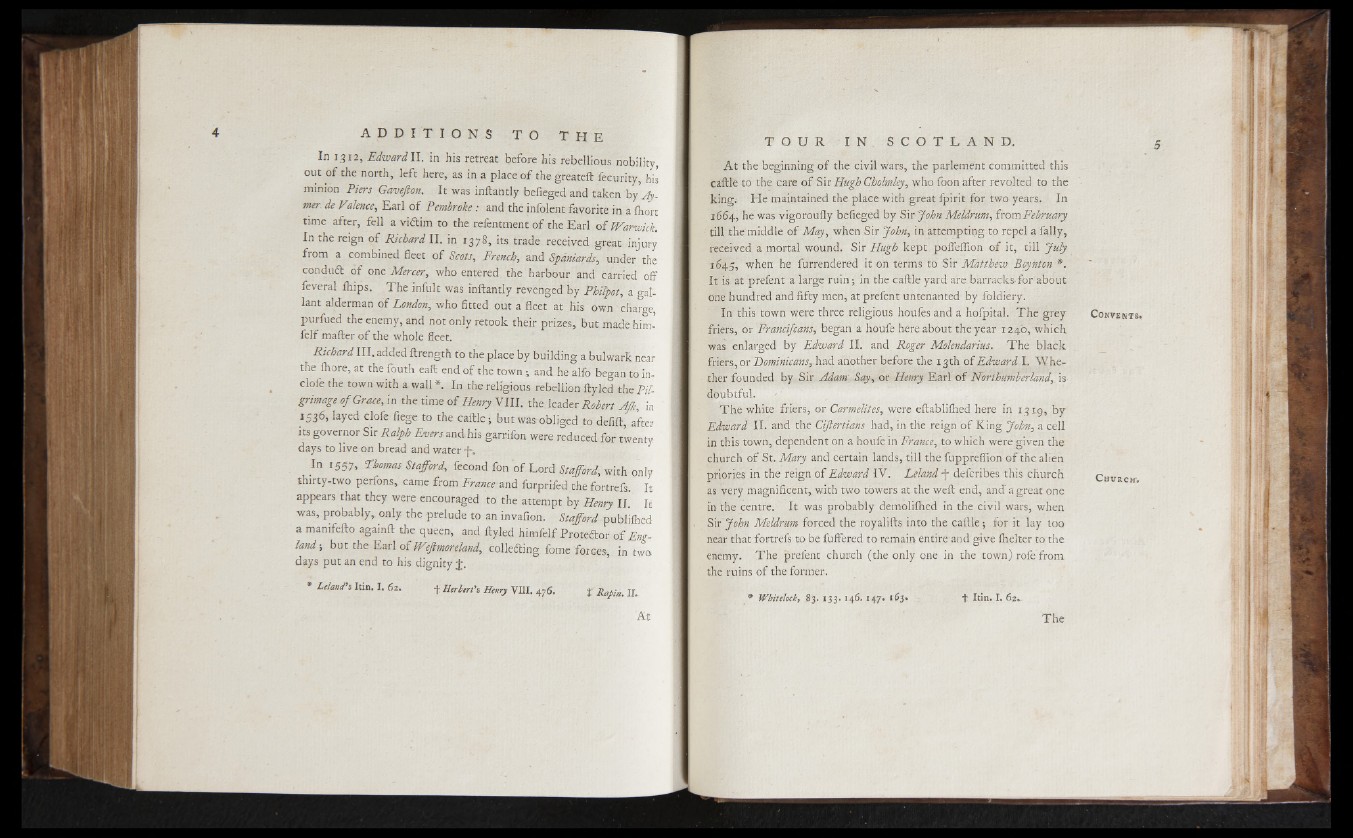
In 1312, EdwardII. in his retreat before his rebellions nobility
out of the north, left here, as in a place of the greateft lecurity, his
minion Piers Gavefton. It was inftantly befieged and taken by Ay-
mer de Valence, Earl of Pembroke : and the infolent favorite in a Ihort
time after, fell a viftim to the refentment of the Earl of Warwick.
In the reign of Richard II. in 1378, its trade received great injury
from a combined fleet of Scots, French, and Spaniards, under the
conduift of one Mercer, who entered the harbour and carried off
feveral ihips. The inful t was inftantly revenged by Philpot, a gallant
alderman of London, who fitted out a fleet at his own charge,
purfued the enemy, and not only retook their prizes, but madehim-
felf mafter of the whole fleet.
Richard III. added ftrength to the place by building a bulwark near
the ihore, at the fouth eaft end of the town ; and. he alfo began to indole
the town with a wall *. In the religious rebellion ftyled the Pilgrimage
of Grace, in the time of Henry VIII. the leader Robert Aft, in
1536, layed clofe frege to the caftle; but was obliged to defift, after
its governor Sir Ralph Evers and his garrifon were reduced for twenty
days to live on bread and water +.
H 155-7> Thomas Stafford, fecond fon of Lord Stafford, with only
thirty-two perfons, came from France and furprifed the fortrefs It
appears that they were encouraged to the attempt by Henry II.' It
was, probably, only the prelude to an invafion. Stafford publilhed
a manifefto againft the queen, and fty.led himfelf Proteftor of England
; but the Earl of Weftmoreland, collefting fome forces,, in two
days put an end to his dignity J.
* Lcland’ s Itin. I . 62. f Herbert's Henry VIII. 476. j f Rafin. II.
J-'fy L i f , ' ■ >\h I ' -'</ I ’ At
At the beginning of the civil wars, the parlement committed this
caftle to the care of Sir Hugh Cholmley, who foon after revolted to the
king.- He maintained the place with great fpirit for two years. In
1664, he was vigoroufly befieged by Sir John Meldrum, from February
till the middle of May, when Sir John, in attempting to repel a fally,
received a mortal wound. Sir Hugh kept pofiefiion of it, till July
1645, when he furrendered it on terms to Sir Matthew Boynton *.
It is at prefent a large ruin; in the caftle yard are barracks-for about
one hundred and fifty men, at prefent untenanted by foldiery.
In this town were three religious houfes and a hofpital. The grey
friers, or Francifcans, began a houfe hereabout the year 1240, which
was enlarged by Edward II. and Roger Molendarius. The black
friers, or Dominicans, had another before the 13th of Edward I. Whether
founded by Sir Adam Say, or Henry Earl of Northumberland.,. is
doubtful.
The white friers, or Carmelites, were eftabliihed here in 131,9, by
Edward II. and the Ciftertians had, in the reign of King John, a cell
in this town, dependent on a houfe in France, to which were given the
church of St. Mary and certain lands, till the fupprefilon of the alien
priories in the reign o f Edward IV. Leland -j- defcribes this church
as very magnificent,, with two towers at the weft end, ancT a great one
in the centre. It was probably demoliihed in the civil wars, when
Sir John Meldrum forced the royalifts into the caftle 5 for it lay too
near that fortrefs to be fuffered to r-emain entire and give Ihelter to the
enemy. The prefent church (the only one in the town) rofefroni
the ruins of the former.
* Whittled, 83. 133. 146. 147 . 163* ; t Inn. I. 6 2 -
The
C onvents»
C h u rch ’,